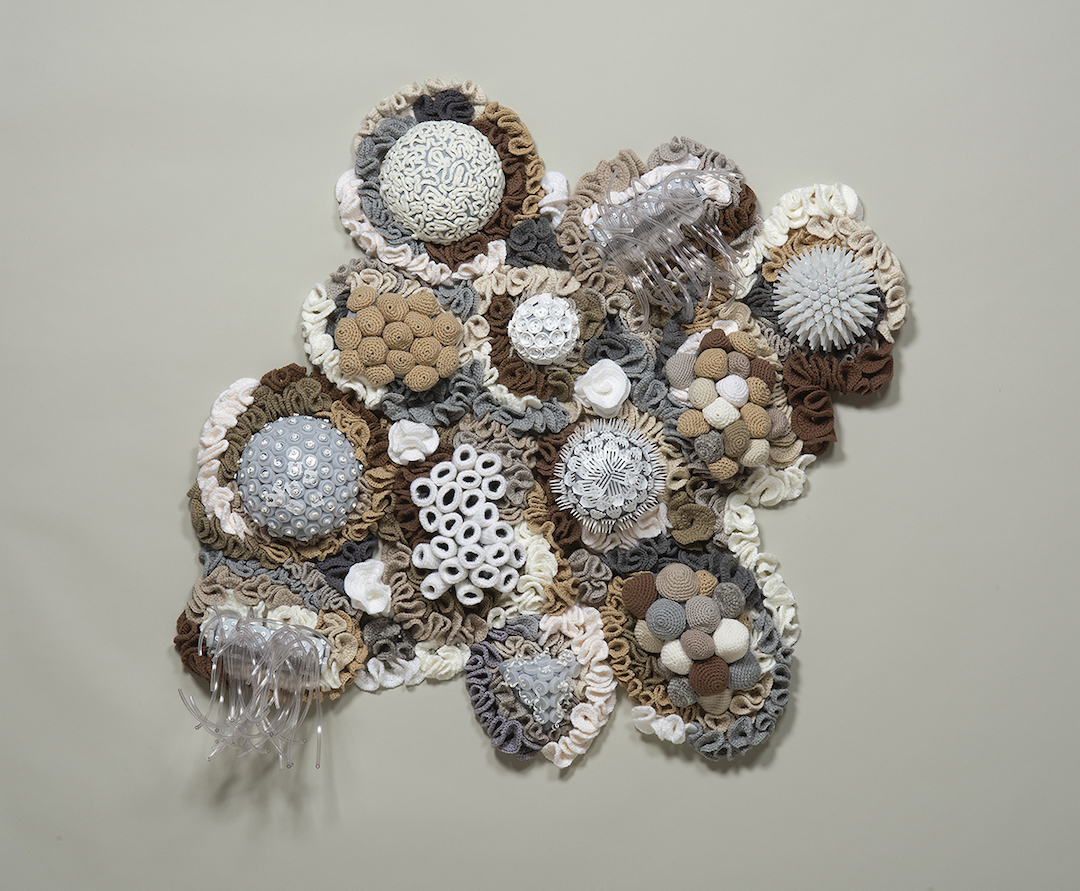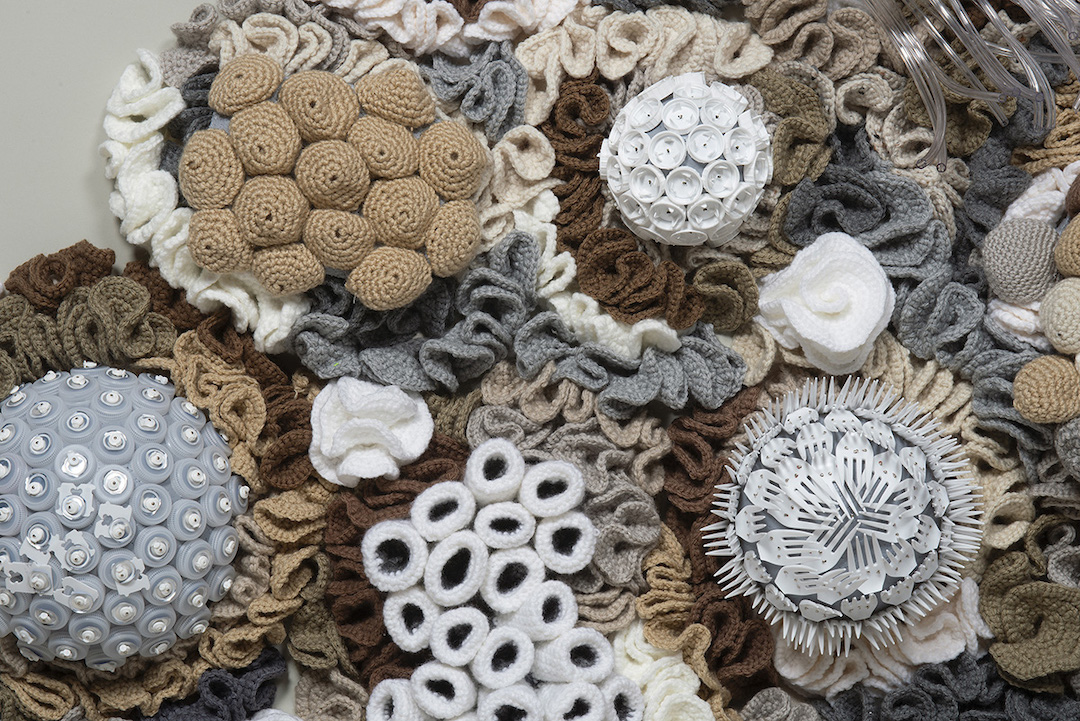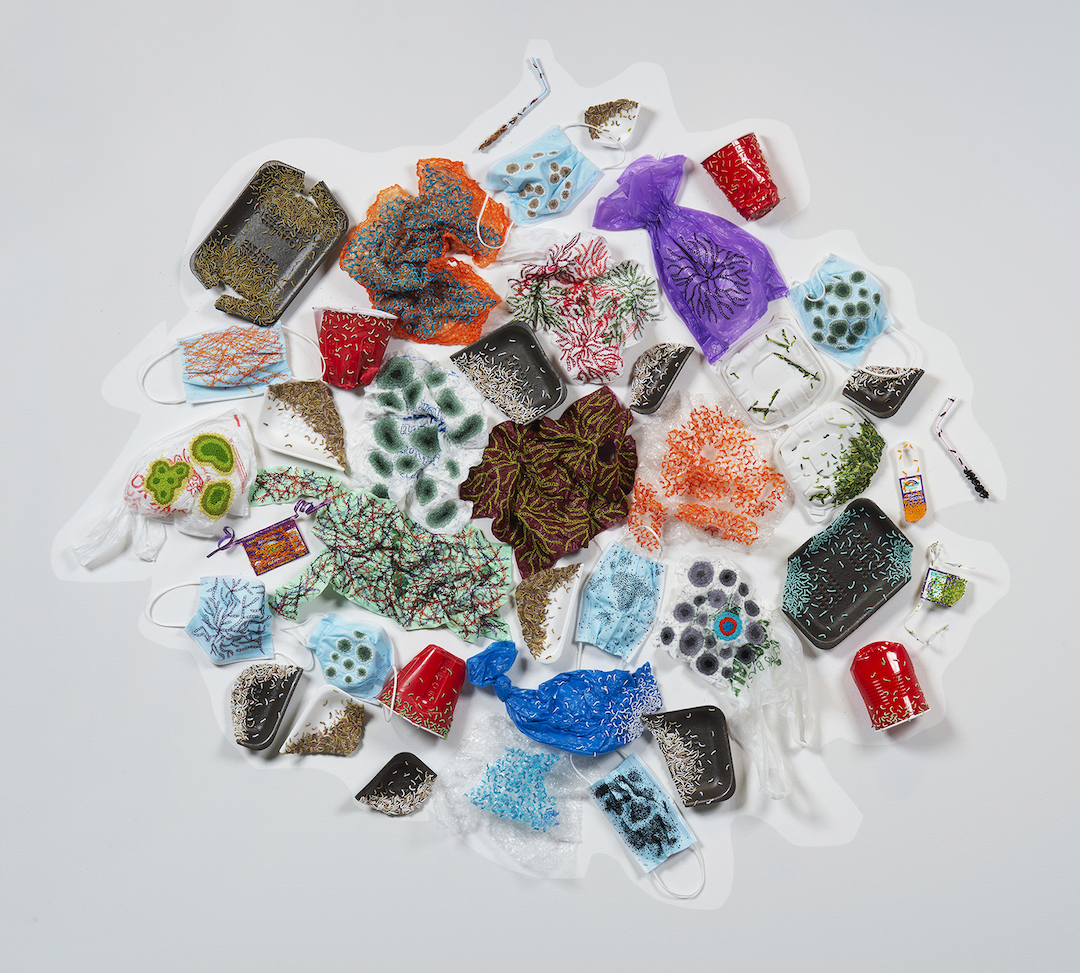Threads of Change
Ruth Tabancay
Website - https://www.ruthtabancay.com/
Instagram - https://www.instagram.com/ruth_tabancay/
Ruth Tabancay began her adult professional life as a hospital laboratory technologist, then as a physician in private practice, and finally as an exhibiting artist. An innate love of science led her to major in Bacteriology in college which would form the basis of her early artwork. Then, her concepts centered around microscopy and scale using the textile techniques–crochet and knitting–that she taught herself as a child as well as the scanning electron microscope, computerized Jacquard loom, and textile techniques such as felting, embroidery, and material-based art. More recently her work concerns environmental issues such as bleaching of the coral reefs, organisms’ ability to digest plastic, sustainable alternatives to fast fashion, and ecological systems such as mycorrhizal networks and bee colonies.
She is a graduate of University of California, Berkeley; University of California, San Francisco, School of Medicine; and California College of the Arts. Her work has been exhibited nationally and regionally including The Textile Museum, Washington, D. C.; World Financial Center, New York City; Museum of Craft and Design, San Francisco; San Jose Museum of Quilts & Textiles. She lives In Berkeley, California.
The content of my work derives from concepts and constructs from my past: childhood experiences, formal education, and an innate fascination with math and science. With techniques such as hand stitching, embroidery, knitting, rotary knitting machine, arm knitting, crochet, wet felting, cast and burnt sugar, as well as technological tools like the scanning electron microscope and computerized Jacquard loom, I express these ideas visually. My materials are as varied as thread, yarn, wool, sugar, tea bags, metallized Tyvek, silk, beeswax, plastic waste, and vintage linens.
The largest body of my early work was based on microscopy and magnification. Years spent looking through a microscope for my education and early career have inspired me to create the microscopic world into a tangible, non-magnified one. Subjects included embroidered bacteria, the use of the scanning electron microscope on commercial fabrics for Jacquard weaving and photographic images, and felted bacteria and blood cells are the most recent subjects of my work.
A second body of work refers to geometric forms, both Euclidean and non-Euclidean geometries. I recall as a child being captivated by the pattern of hexagon tiles on my grandmother's bathroom floor. With seemingly limitless variations in color and arrangement, I created floor-level installations made of cast sugar hexagons and suspended pieces of stitched hexagons made of silk coated with beeswax. Non-Euclidean hyperbolic geometric forms were represented with crochet to form hyperbolic planes and pseudospheres.
Since 2020, my work has focused more on environmental issues and ecological systems. Micro-organisms digesting plastic, bleaching of the coral reefs, mycorrhizal networks in forest underground, and natural pests of bees have been themes in my newer work.


Plastic Reef, 2024
Crochet, assemblage. Yarn, plastic discards, pins, polystyrene, canvas
60" x 106" x 10"
Price on Request


Bleached 3.0, 2024
Crochet, assemblage. Yarn, plastic discards, pins, polystyrene, canvas
48" x 48" x 10"
Price on Request

Adapting to New Substrates 4.0, 2024
Hand embroidery. Plastic, embroidery floss
48" x 48" x 3"
Price on Request






